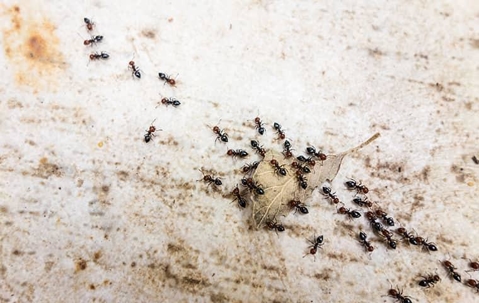When you think of ants, you likely think of them as a nuisance to keep away from the food if you're on a picnic. However, different species of ants cause different problems, which is why it's important to understand which ant has invaded your home. The most common species you'll find are:
- Carpenter Ants: Growing up to 1/2 an inch in length, this species is black in color and is one of the largest in the area. Unlike many other ants, this one is definitely a problem thanks to their ability to cause property damage.
- Argentine Ants: Half the size of pharaoh ants, this species is highly aggressive and is brown in color. While not as threatening as some other species of ant, they have been known to bite humans. Even worse, they've evolved to thrive in urban environments and will make multiple colonies making it impossible to remove them without professional assistance.
- Pharaoh Ants: In general, this species isn't a problem for humans save for the fact they can boast large numbers and it's not always clear where their nest is located. They are light brown to yellow in color.
- Pavement Ants: Usually found in the cracks of the pavement, this ant is mainly a nuisance since they travel in large numbers.
Also, they really love human food, which can make them extra annoying if you've left food out.
Why They Come Inside
Ants, like other pests, are always in search of food and water. When they find either, they bring it back to the colony and create what amounts to a supply chain. Some specific factors that attract them include:
- Food That's Left Out: Ants will eat your food whether it's crumbs, leftovers, or still has yet to be touched. If any food is left out, they'll find a way to claim it as their own.
- Standing Water: If you have puddles near the home, leaky pipes or faucets, or any other sources of water lying around, then ants will be interested in making your home theirs.
- Sugary Substances: Did you spill some juice? Have you left out some cupcakes from the party? Even more than basic food, ants are attracted to sugary substances.
At this point, you know what attracted them inside, and now we'll cover how they got inside. Fortunately, the answer is really simple. They're tiny and can slip through the tiniest crack or hole that exists.
Ant Prevention At Work
Ant prevention is much easier than ant control for two important reasons. The first reason is they're so tiny it's hard to detect them until it's too late. The second reason is their large numbers. Once they've established themselves, it's hundreds of ants instead of just a handful. You can better prevent ant infestations through:
- Food Storage: It's simple logic. If they like your food, then the best way to keep them away is to make it impossible for them to get into your food. Store the food in proper containers and make sure they are put away properly.
- Remove The Water: If the ants don't feel like they'll have easy access to water, they won't stay. Instead, they'll move away so be sure to remove all standing water and repair any leaks to ensure easy ant prevention.
- Seal Entry Points: Use silicone caulk to fill any holes or cracks they're getting through to prevent access in the first place. Be sure to check along windowsills and doorways while you're performing this task.
No More Ants With Pro Active Pest Control
Sometimes, ants make it inside despite your best efforts. When that happens, you need professional assistance. At Pro Active Pest Control, we're prepared to deliver unmatched results with superior service for pest elimination. We offer ongoing pest control and prevention plans to manage future issues from occurring. We are a local, eco-friendly company with a 100% service guarantee. Contact us at Pro Active Pest Control today for your free no-obligation quote!

